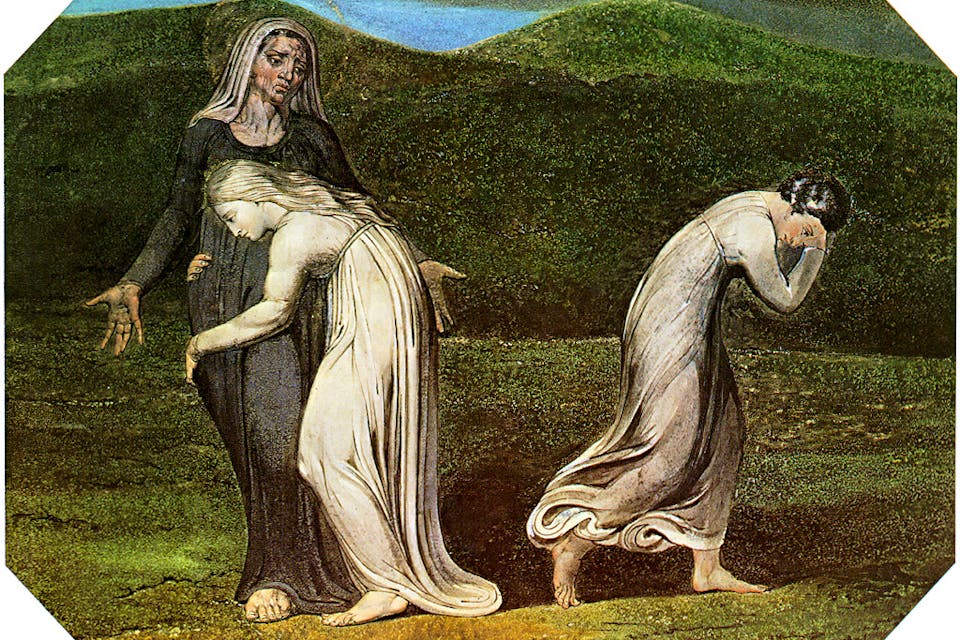
June 7, 2019
How the “Jewish National Poet” Revitalized an Ancient Literary Form
The great Ḥayyim Naḥman Bialik's "Scroll of Orpah" retells the story of the book of Ruth from another perspective.
By the time he settled in the Palestine of his dreams in 1924, Ḥayyim Naḥman Bialik (1873-1934), acclaimed as the “Jewish national poet” from a very young age, had for the most part ceased writing poetry. Instead, he focused his efforts on running the Dvir publishing house with his longtime collaborator Y.H. Ravnitzky, gradually appointing himself custodian of the Hebrew language and its cultural treasures—that is, its stories.
In particular, Bialik devoted himself to a massive enterprise, which he and Ravnitzky had begun around 1904, of accumulating, revising, refining, and clarifying the narrative portions of the Talmud and other ancient rabbinic works. The result, Sefer ha-Aggadah (The Book of Legends), is justly considered a masterpiece along with Bialik’s finest poetry.
Nor was that the end of it. In the early 1930s, toward the end of his life, Bialik produced a series of midrashic stories of his own, in which he drew on these materials and honed them in sometimes surprising ways. One of the resulting works was the “Scroll of Orpah,” intended as a counterpart to the “Scroll of Ruth,” as that biblical book—traditionally read in the synagogue on the upcoming holiday of Shavuot—is known in the Jewish liturgy. Bialik’s brief work, which I’ll translate below with a running commentary, bears the name of Ruth’s sister-in-law. It focuses on the differences between these two women, which it heightens to startling effect, and on the difference those differences make in the way their respective lives pan out.